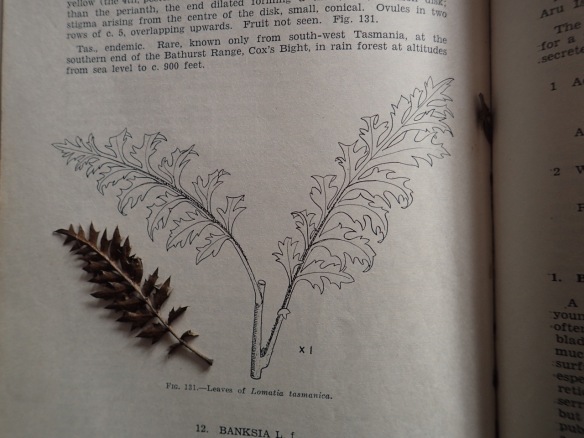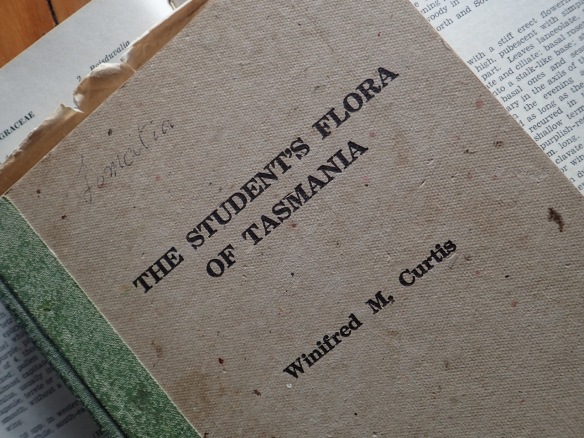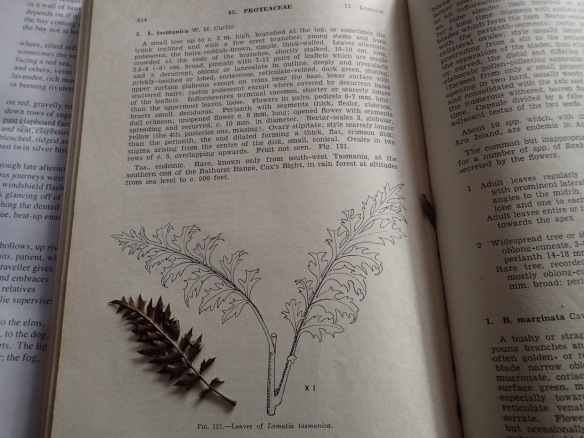
Genuine piece of ancient plant clone! King’s Holly (Lomatia tasmanica) leaf with line drawing from the Student’s Flora of Tasmania.
K could just as easily be for “King” – the famed King family managed to get their names stuck on all sorts of things in the general Melaleuca vicinity, having played a key role in establishing and maintaining a small tin-mining industry in the area. Deny King in particular was known for his fascination with the natural world, and when he found an unusual-looking plant down near Cox’s Bight in 1934, he took samples and sent them off to the Tasmanian Herbarium for identification. It was only in 1967, after the Kings were able to send a flower from the plant to the Herbarium, that the botanical oddity was formally identified.
This plant came to be known as Lomatia tasmanica – commonly known as King’s Lomatia or King’s Holly, although it is not a holly at all. It is, in fact, a very strange plant indeed.

Tasmanian Botany Bible – a.k.a. The Student’s Flora of Tasmania (part 3 of 5), written by the Tassie botanical legend, Winifred Curtis. In the Fenton/King household, King’s Lomatia naturally gets a hand-written mention on the front cover of this esteemed tome.
Sequestered in a secret reserve south of Melaleuca, guarded by teams of highly trained pademelons, the entire wild population is contained within a tiny pocket of vegetation, visited rarely by scientists studying the plant, and sadly off limits to botanical tire-kickers.
King’s Lomatia reproduces only vegetatively, which means that all plants in existence are genetically identical clones. Carbon-dating has suggested that these plants, considered to be one individual, are around 43,000 years old, making Lomatia tasmanica the oldest living plant on earth.
It’s also critically endangered, down to about 500 plants in the wild, spread over about 1.2km, although I’ve heard there is a graft of one growing on a dam wall somewhere in SE Tasmania. Its close relative, Lomatia tinctoria, provides suitable rootstock for this sort of botanical Frankenstein malarky, and the plant is a local floral celebrity amongst those in the know. The Royal Tasmanian Botanical Gardens have been working on growing a conservation collection of King’s Lomatia since 1994 – it’s apparently a bit of a bugger to grow, and it’s thought that climate change is already impacting the viability of the small population in the wild.
So, while you won’t be able to *see* King’s Lomatia whilst at Melaleuca (unless you’re a special botanist or suitably accredited pademelon), as you walk down to Cox’s Bight, you can feel secure in the knowledge that the world’s oldest plant still limps on somewhere nearby.

